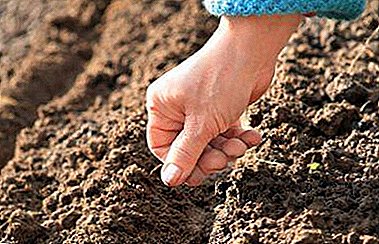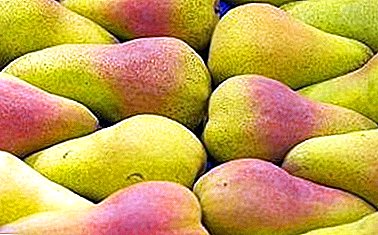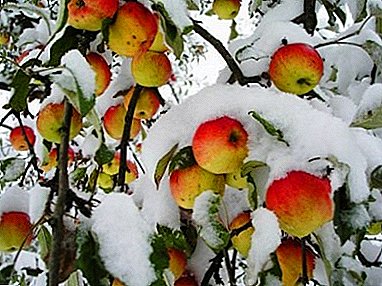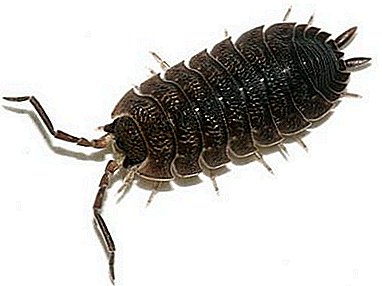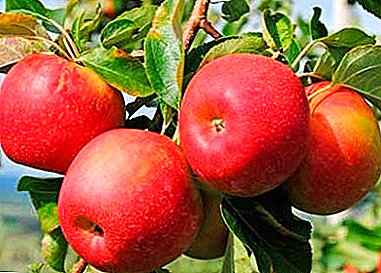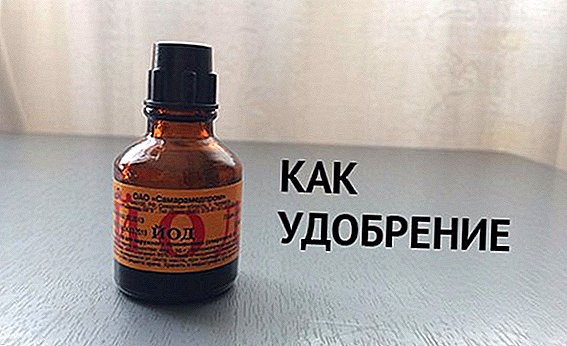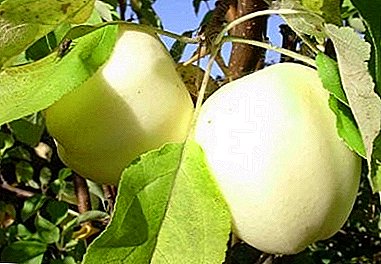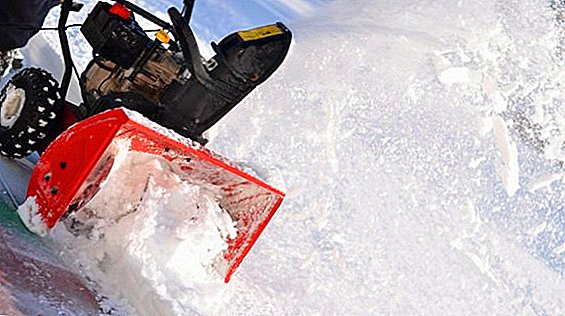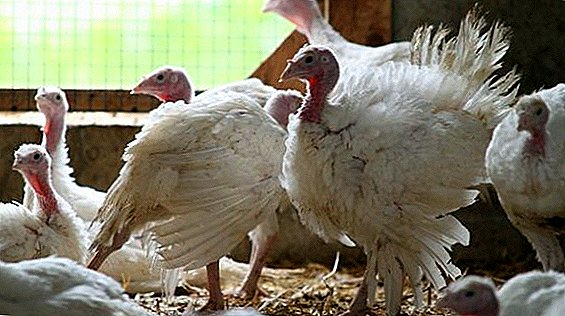 Turkey-grade maker - meat cross, combining all the best qualities of this poultry.
Turkey-grade maker - meat cross, combining all the best qualities of this poultry.
It is one of the most sought-after breeds of turkeys, as it is ideal for breeding in private households.
Origin
Grade Maker - moderate hybrid white wide-breasted turkey, bred by Hendrix Genetics breeders in Canada. The breed was obtained by crossing turkeys of wild varieties with selected domesticated birds. In Europe and Canada, the bird is called the "holiday turkey". 
Appearance and character
Individuals of this breed have snow-white and unusually fluffy plumage. The bird is also characterized by a wide, powerful (big) breast. As for the nature of the representatives of this breed, they have it pretty nasty, ugly. Males Grade Maker often fight among themselves. They constantly vie for females, often causing serious injuries to each other.
Performance Indicators
Grade maker - moderate cross. Its growth rates are quite fast.
We advise you to read about the beneficial properties and the use of turkey eggs, liver, meat.
Productivity characteristics are as follows:
- the live weight of males reaches 4.5–20 kg by 4.5 months, females weigh half as much (in 4 months their live weight is approximately 9–11 kg, however, these weight indicators are sufficient to recoup the costs of rearing);
- the optimal slaughter age of a bird is 4-4.5 months, sometimes farmers slaughter a bird at 10-12 weeks (by this time its weight reaches 4-5 kg, and the meat in young individuals is even softer and juicier);
- the onset of egg-laying occurs at the age of 8-9 months;
- turkeys bring from 80 to 100 eggs during the reproductive period, hatchability - 87%;
- by weight, one egg is 80-85 g, their color is gray or beige of varying intensity with brown patches over the entire surface.

Conditions of detention
For the successful breeding of this cross you must comply with the conditions of comfortable development of the bird.
How to equip a poultry house
Turkeys must sleep on perches. Since the representatives of the species in question are heavy birds, you need to take care of their strength. The bar must be of sufficient thickness. The height of the roosts should be 80 cm, and the width between them should be at least 60 cm.
A group of three birds should be allocated 4-5 square. m area turkey.
For better egg production, females need to be properly equipped with it. place for laying. In a secluded corner, install the nest from a basket or a wooden box. Put straw or hay in it. The average height of the nest should be 15 cm, width and height - 60 cm. A nest of this size is suitable for 4-6 hens.
Important! Taking into account the aggressive nature of turkeys, it is important to choose the correct sex ratio: 7-8 turkeys should be per 1 male. Thus, in one compound it is desirable to contain no more than 40 individuals, of which there will be 5 turkeys.
Constantly keep optimal in the house the temperature for these birds: for adults it is + 22-23 ° C.  In addition, the turkey must not be damp or dirty. These two factors are an enabling environment for pathogenic bacteria. The turkey dwelling should be dry, with no leaking roof or wet bedding.
In addition, the turkey must not be damp or dirty. These two factors are an enabling environment for pathogenic bacteria. The turkey dwelling should be dry, with no leaking roof or wet bedding.
To heat did not go away, you need to monitor the absence of drafts in the house. However, opening vents or air vents are necessary for fresh air to enter.
Learn more about building your own turkey barn.
There are no special requirements for growing young stock. The main thing is to guarantee constant temperature indicators in the first two weeks (not below +35 ° C). Care must also be taken to ensure that the poults receive enough sunlight. It contributes to the rapid growth and formation of a good immune system of birds.  Its lack of cool spring days can be compensated by ordinary incandescent bulbs. For birds older than 7-10 days, heating is no longer necessary. However, there should always be enough light in the turkey. To do this, in its walls can be done several small holes for the penetration of sunlight.
Its lack of cool spring days can be compensated by ordinary incandescent bulbs. For birds older than 7-10 days, heating is no longer necessary. However, there should always be enough light in the turkey. To do this, in its walls can be done several small holes for the penetration of sunlight.
Did you know? When Neil Armstrong first landed on the moon, his first dinner was just roasted turkey. True, the food was vacuum packed.
Walking yard
Since turkeys of this breed quickly gain weight, they should have a place for daily walks. An active lifestyle will prevent obesity and help maintain good immunity. For this a spacious pen is created, which can be reached immediately from the house. It is desirable to fence the courtyard with a high fence, since turkeys of this species can fly quite high. Or you can cut the wings of young individuals, as we will discuss below.
Walks must last at least an hour a day. Cubs can be let go for a walk from the age of 14 days, but only when accompanied by a female. It is possible to produce poults in the courtyard from 2 months of age. 
Feeding troughs, drinkers, tank with sand
It is necessary to prepare for the purchase of chicks in advance by purchasing equipment (drinkers, feeders) and installing containers with sand. For young animals, these items should be made exclusively of soft material (silicone or rubber) so that the cubs do not damage their soft beaks. Always install drinking bowls close to incandescent bulbs, this will keep the water temperature at a stable level (not less than +24 ° С). This rule applies to chicks under the age of 1 month.
Important! Poults should be good at distinguishing between drinkers and feeders. Therefore, it is important that these containers are located in visible places.
The height of the feeder for adults representatives of the grade maker should be on average 15 cm. Any suitable vessel will be suitable as a drinker. The main requirement is to install a tank at an elevation so that all sorts of garbage does not fall into the water.
Turkeys in the yard should definitely be small box with clean sand (can be mixed with ash). The ideal size of the tank is 130x85x30 cm. This device will be the key to good health of the turkeys. There they will take "dry baths", which will avoid the appearance of any kind of skin parasites. As you use, you should replenish the contents of the box. Given the dryness of the birds of this breed, for the time of heavy rains, the box must be covered with foil. 
How to endure winter cold
Grade maker is a heat-loving bird, it needs to provide dry and warm housing, especially during the cold season. Despite a strong immune system and excellent vital signs, turkeys do not tolerate cold. Ensure that the air temperature in the house does not fall below + 18-20 ° C. In winter, it is necessary to use straw bedding for heat.
The walls of the house should not have very large windows, since in winter the heat factor is an order of magnitude more significant than light. For adults, turn on in winter additional lightingThis will help extend the daylight hours.
Read also about home turkey breeds, breeds and broiler turkey breeds.
Trimming wings
If you plan to leave part of the turkeys for the future, at the age of 3-4 months, you must trim the wing feathers on the wings. The procedure will prevent the birds from flying through the net and will not allow it to escape.
 It is desirable to trim only one wing - the bird will lose the balance required for flight. Crop is carried out by two people - one holds a turkey, the other works with scissors or shears.
It is desirable to trim only one wing - the bird will lose the balance required for flight. Crop is carried out by two people - one holds a turkey, the other works with scissors or shears.
After molting, feathers grow back, and they will need to be cut again. Birds from 6 months of age feathers are not cut, and tied at the back.
Important! For females preparing to become hens, trimming the wings is undesirable. Wings will be useful to them in order to completely close the eggs in the nest. Feathers should be enough for all the eggs in the clutch, otherwise they will not be able to warm up to the desired temperature.
Feeding ration
Consider how to properly organize the feeding of adults and young representatives of the cross grade maker. 
What to feed adults
Adults of this breed love to eat. They need to be fed at least three times a day. During the mating season, the number of meals increases to 4-5 daily. The basis of the menu is dry and germinated grain. In the warm season, fresh greens should certainly be present in the diet.
In the morning and for lunch, give the turkeys a wet mash, and as a dinner, offer dry grain.
Check out current turkey crosses: Big 6, Victoria.
How to feed turkey poults
During the first month of life, the chicks should eat 7-8 times a day. Give the kids a mixture of chopped boiled chicken eggs and raw wheat cereals. From the seventh day you can include in the diet cake, fish meal, cottage cheese. From the twentieth day of life, in addition to wheat, you can give turkeys another dry grain (corn, millet). After 4 weeks, while continuing to feed on such mixtures, gradually add fresh herbs (clover, alfalfa or cabbage leaves) to the diet. Greens must be chopped beforehand. You can also give special combined feed for chicks. 
Vitamin supplements
In winter, the bird needs additional organic (vitamin) supplements. Introduce natural vitamin supplements consisting of beets, carrots and cabbage. You can dry up the tops of these plants in advance, even in summer, and in the winter period to offer these additives to turkeys in steamed form.
Tips for poultry farmers: how to grow turkeys in an incubator and distinguish by gender.
Pros and cons of cross
Grade maker turkeys are marked by a variety of merits:
- rapid development and increased rate of weight gain (without the use of intensive growing techniques);
- excellent taste, usefulness and digestibility of meat and eggs;
- beautiful presentation of carcasses;
- good immune system and high disease resistance;
- lack of care in feeding;
- excellent stress resistance;
- when growing poultry costs quickly pay off.
Only minus, which can be distinguished - the cross is very sensitive to temperature changes, it grows comfortably only in warm conditions.
Did you know? The largest baked turkey weighed 39.09 kg. It was prepared on December 12, 1989.
Video: feeding maker turkeys
Reviews of cross-grade maker

In conclusion, I would like to note that Grade Maker turkeys are perfect for novice farmers. The bird is most adapted for breeding in conditions of small farms and private homesteads. The money and energy invested in the maintenance of these turkeys will very soon justify itself.


